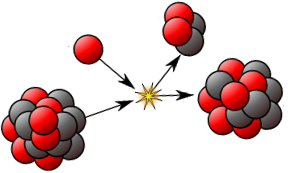Powerful lasers have managed to trigger a controlled fusion reaction that releases more energy than was absorbed by the fuel. It marks a  key milestone in the quest to generate useful power by squashing together the nuclei of atoms.
key milestone in the quest to generate useful power by squashing together the nuclei of atoms.
The National Ignition Facility (NIF) in Livermore, California, uses 192 high-powered lasers to fuse deuterium and tritium - heavy isotopes of hydrogen - inside a fuel pellet the size of a pea.
This pellet is held inside a gold container called a hohlraum. When the lasers hit the hohlraum, it creates a burst of X-rays that force the fuel pellet to implode, reaching millions of degrees and crushing the nuclei inside until they fuse - a process that converts some of their mass into energy.
For the first time, the experiments have released more energy from the fuel than was put in by the X-rays - about 1.2 to 1.9 times more. Although this amounts to only 1% of the original laser energy, because most of that was absorbed by the hohlraum
To achieve true 'ignition', there would have to be an overall energy gain. Researchers at NIF boosted the energy yield of the fusion reaction by tuning the lasers so that they delivered more of their energy earlier in the pulse.
This made the fuel pellet less unstable as it imploded, and also prevented some of the energetic fusion debris from escaping, so that it could help to trigger more fusion reactions. It's an important milestone for NIF, which has struggled to reach key goals such as this.
Last year, NIF's research programme was restructured so that it spends more time doing nuclear weapons research, with the aim of keeping warheads safe and reliable without needing detonation tests.
Meanwhile, the world's biggest fusion project, ITER, is still likely to be the first reactor to produce substantially more energy than is put in. This giant, donut-shaped reactor, which will contain its fuel within powerful magnetic fields, is being built in Cadarache, France. With a budget of EUR15 billion, project managers hope it will start to generate power in 2028.









Comments
Add a comment